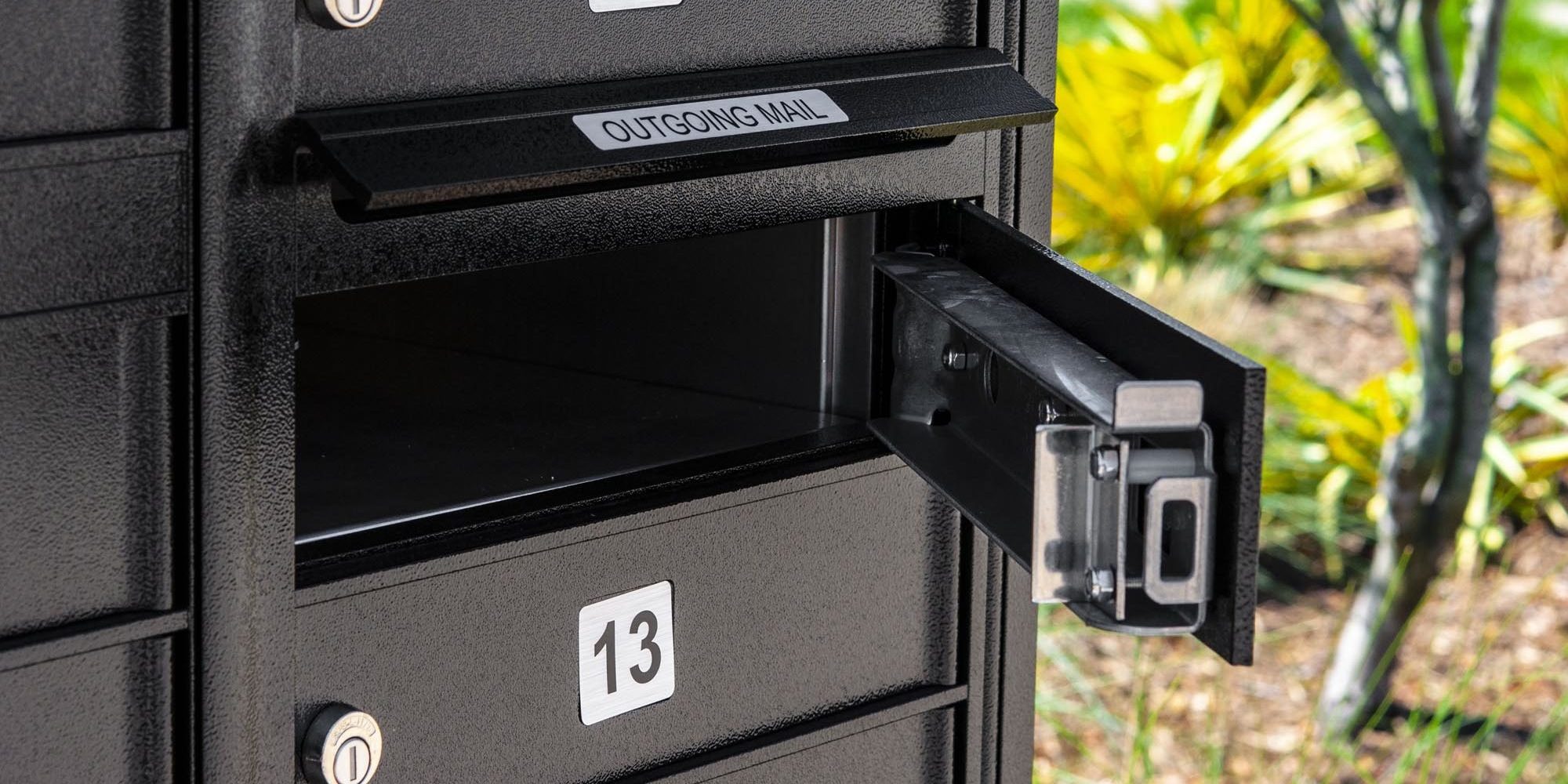Efficiency and Security with Cluster Mailbox Units
As of 2021, the US Postal Service added 1.7 million and served more than 63.1 million delivery points daily. This logistical challenge requires efficiency throughout the process, especially at the delivery point to customers, whether to a free-standing mailbox, mail slot, or cluster box unit.
Making sure that mail was delivered quickly and dependably was critical to the American Colonies in 1775. On July 26, 1775, Congress appointed Benjamin Franklin the first Postmaster General of the organization now known as the United States Postal Service. He was responsible for all Post Offices from New England to Georgia, where postal carriers delivered letters and parcels directly to the recipient on horseback, foot, and boat. This was a laborious process as there were no standard delivery receptacles to receive mail. The mail carriers searched for the intended recipient, which took valuable time. As a result, in 1923, the Post Office Department put into law that all households must have a letter slot or mailbox to receive mail. The postal employees were still required to visit each recipient’s address; however, there was a dedicated receptacle to deposit the mail.
In 1901, the security of mail became a concern, and it was thought that mail deposited in officially approved boxes would offer better protection from weather and theft. A committee agreed upon the basic shape and size of new mailboxes and while customers were not required to remove existing mailboxes, only approved mailboxes were permitted on new routes or when replacing old boxes. This policy continues to this day.
Centralized Delivery and the Cluster Mailbox
Cluster mailbox units or CBUs were first introduced by the United States Postal Service in 1967 as a method of central delivery to serve large buildings and, more infrequently, residential neighborhoods. Because the USPS carrier only had one stop to make at the CBU, this type of mail delivery and collection improved efficiency and provided security for the recipient’s mail.
As the years passed, the new specifications for a CBU mailbox were released by the USPS, making it difficult to standardize the quality of the units. Shortly after the start of the new millennium, in 2005, manufacturers must have a license from the USPS to make them.
Types of cluster mailboxes
Today, developers of all new residential neighborhoods, business complexes, and shopping centers are required to install USPS approved cluster mailbox units built within the required specifications. Developers have a choice of 2 types of cluster mailbox units to install:
- Pedestal-mounted USPS-approved CBU.
- Wall-mounted USPS-approved STD-4C mailboxes.
Both types are “package friendly” as they are designed to accommodate most packages delivered through the US Mail. CBUs also include parcel lockers, which provide separate locked storage for many packages.
The benefits of a cluster mailbox unit are:
- Safety and security
- Protection from the elements
- Durability
- Aesthetically pleasing in comparison to a variety of individual mailbox units
While choosing and installing a CBU can seem straight forward, depend on Brandon Industries who has years of experience providing streetscape and site amenities, including CBUs and curbside mailboxes to help you develop a USPS delivery plan that achieves an acceptable balance between the efficiency needed by the USPS and the convenience demanded by future homeowners.
Brandon Industries—Quality Streetscape Solutions™
While choosing and installing a CBU can seem straightforward, depend on Brandon Industries to help you develop a USPS delivery plan that achieves an acceptable balance between the efficiency needed by the USPS and the convenience demanded by future homeowners.








